Premium Only Content
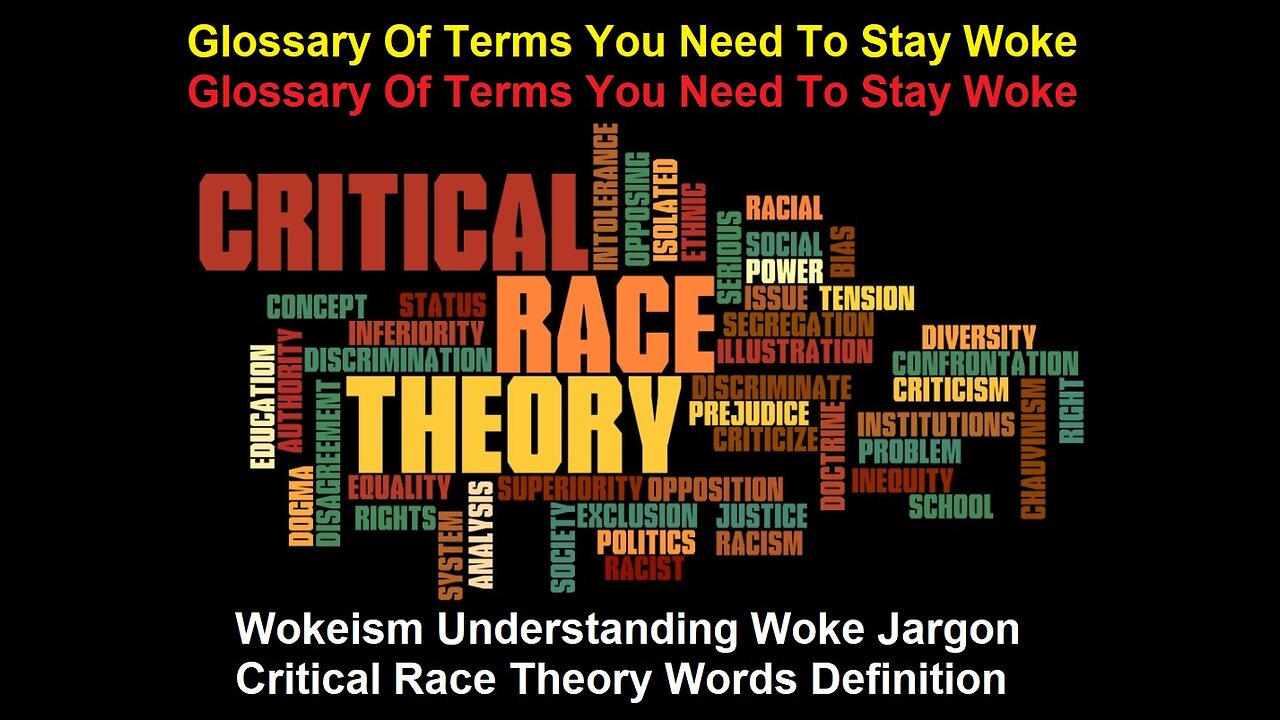
Wokeism Understanding Woke Jargon And Critical Race Theory Words Definition
Understanding Woke Jargon And School Activists employ an array of new words and phrases to describe their beliefs and goals. If you hear many of these phrases and can’t figure out what they mean, that’s because it’s by design. This vocabulary is intended to mislead – to make harmful and extreme ideas sound admirable and to conceal meaning through ambiguity. In preparation for this article I researched several actual glossaries of woke terms. My surprise wasn’t that I found so many to research, rather that the zeal of their collective efforts to fold, bend, staple and mutilate the language of common discourse has remained so resolute despite so much ridicule and parody over the past several years. When SNL, the very embodiment of woke culture, parodies woke culture, it may be time to bid adieu. Still, wokeness refuses to grow old (unlike the rest of us), and therefore requires constant renewal and maintenance (just like the rest of us).*
Admittedly, my modest contribution to the destruction of the language for transparently political reasons is late to the game, although the list below strays somewhat from the traditional glossary format: rather than simply reiterate the intended woke definition of each term or phrase, I define it by its actual Doublespeak counterpart. Please feel free to comment below on my attempts, or add your own…
https://newdiscourses.com/translations-from-the-wokish/
A glossary of terms you need to stay woke in 2023
“That’s what I hate about the times we live in, the terms,” a hapless Ellie Guggenheimer once said, forever immortalized in Tom Wolfe’s “Radical Chic,” a biting ’70s report about upper class society members appropriating street politics. It seems like every time there’s any sort of political pushback on words, there will always be well-meaning people who, struggling to keep up, become averse to society’s new lexicon and the changing times of politics. And of course, these two come hand-in-hand; a large-scale social awakening necessitates a change in language.
By now, it seems obvious that the same thing is happening. When we look back at 2018, there’s one thing that we can say for sure: everyone got a lot more political. Maybe it’s because we have more skin in the game (with dictators and would-be dictators in power, everyone’s rights are in question), or maybe we’ve just evolved as a people. 2018 became the year of power and anger, of visibility and acceptance. LGBTQA+ representation shot up. Victims of sexual abuse and rape, instead of being sent to the lion’s den like they would’ve been in other years, were lionized. The political and social landscape no longer had a place for complacency.
Of course, that’s not to say that the entire world became a liberal paradise. Authoritarianism continued to rise globally, the alt right still existed in droves, rapists were acquitted and put into power, and Imelda Marcos was allowed to place bail to evade jail time. Still, it’s fair to say that the tides are turning. For some perspective, when I was in high school, I was the lone brazen feminist, and I couldn’t say the word “queer,” even though that was what I was. I was also very uncool, the killjoy that wasn’t okay with slut shaming or rape jokes. Now, to be ignorant is to be passé.
So for 2019, we’ve alphabetically compiled a list of terms that you’ll need to know going in to the year. Something to note though: when you use these terms, do it out of a genuine desire to make the world a better place. If you’re scrolling through this list just to appear woke to your internet friends, then you’ve defeated the point. Be radical, not radical chic.
Also, while we tried to be as comprehensive as possible, we won’t pretend that this list is exhaustive. If you think there’s a term we need to add or define, let us know in the comments section below.
Cultural appropriation
Cultural appropriation is when you take elements or use items from another culture without asking permission from the said culture. In itself, the practice is neither inherently good nor bad. However, the act becomes ethically dubious once the person borrowing is from a dominant culture—especially if that culture has a history of colonialism or systemic oppression against the culture the person is borrowing from. It’s definitely wrong if the item or element borrowed is considered sacred by its original culture and the borrower uses it in a way that does not preserve its sanctity. Also wrong: when the borrowing becomes exploitation, or when the borrowed item is used to reinforce racist stereotypes.
Some people argue that the term cultural appropriation itself only refers to when a dominant culture borrows from a minority culture, and that the neutral borrowing should be referred to as cultural exchange, or cultural appreciation. It’s a valid point, but I do believe that it turns the conversation about the practice into “this clearly isn’t appropriation, it’s appreciation!” and vice versa when oftentimes it’s not so black and white.
Identity politics
Identity politics zeroes in on how some groups, whether classified by sexuality, race, ability, or a combination of all three (thus “identity”), face more struggles, injustices, and systemic oppression than others, and it uses this lens as a way of discourse. Unfortunately, the term is often used by rightwingers as a blanket term for “millennial vaguely-leftish trash.” American politician Kamala Harris spoke up about how the right weaponized the term, turning it into a derisive phrase to “shut [people] up” and minimize important issues.
Inclusive
The opposite of exclusive or discriminatory. To be inclusive is to take pains not to exclude marginalized groups, whether it’s by advocating for captions in cinemas so that the deaf or hard-of-hearing can still watch a movie, or for free tuition at state universities so that the youth from disadvantaged communities get a chance to have good education.
Indigenous People
This is the more sensitive term to refer to the distinct ethnic groups who are the original settlers of a specific land or region. Think the lumad of Mindanao and Aeta of Luzon. It’s a tricky thing to define, so I’ll borrow the United Nation’s definition: “Indigenous peoples are inheritors and practitioners of unique cultures and ways of relating to people and the environment. They have retained social, cultural, economic, and political characteristics that are distinct from those of the dominant societies in which they live.”
Common to IP groups is marginalization. Across the board, IP groups are being forced off their land, stripped of their rights, exploited, treated as second-class citizens, and even killed by the dominant culture. Even in media, IP groups are not respected.
“Every time there’s a Filipino TV show and their characters [include] a Negrito or an Aeta, they become a comic character. And there’s also always this black girl who is not considered beautiful until her ‘blackness’ disappears,” says Maria Teresa Padilla, executive director of organization Anthropology Watch.
Intersectional
This refers to how various types of oppression are linked together. In previous years, there was a tendency for many to separate things like sexism and poverty, which only served to further marginalize people. For example, poor women with disabilities face even more oppression than their able-bodied peers of the same economic class, and treating their struggle in the same way disenfranchises them.
Gaslight
It’s a method of manipulation common to abusers. If you’re talking about its meaning in psychology, it’s when the abuser slowly undermines the victim’s perception and capabilities until the victim find themselves questioning their own sanity. Did you ever find yourself apologizing to an ex after they hurt you because they reasoned that you pointing it out hurt them more? Did that make you feel like you were the abusive, “crazy” one? If so, you were gaslit. This practice is emotional abuse.
However, the term has found its way to politics, too. It happens when someone in a position of power makes a baldfaced lie and barrages you into thinking it’s true, even when it so obviously isn’t, somehow creating an alternative reality in which they’re right. Did someone make a claim that was so obviously false and continued to pretend that they were right by insulting you for trying to correct them? Or how about Donald Trump’s efforts to destabilize truth? That’s gaslighting.
Marginalization
Marginalization happens when the ruling class or group treats minorities as insignificant or inferior, often by disenfranchising them of their rights. The act of marginalization is incredibly damaging, and is linked to systemic oppression.
Performative activism
This is the act of making a show of your activism. While there’s nothing wrong with being performative in itself, it becomes wrong when your activism is limited to that. Like the radical chic of the ’70s, it shows that you’ve adopted your activism merely to gain brownie points for yourself, and your public support is all for show. Again, not cool.
Representation
Representation has two meanings, both of which are incredibly important. The first is the depiction of a certain group, people, items, or concepts in media. Historically, representation of minority groups in popular media are rare, and when it does happen, it’s often negative. Think back on the many times our IP groups are depicted as nothing more than monkeys. Representation in this sense is important because media influences the way we perceive the world. Negative representation of minorities can and has encouraged discrimination, while positive representation not only gives the dominant majority a better understanding of those “different” from them, it also gives the depicted minorities a character that they could relate to, someone who actually looks like them, and someone they could see themselves in. The latter may not seem so important to those who are used to being portrayed in media, but it means a lot to those who aren’t.
Aside from representation in media, you also need political representation. This means having people from diverse communities be in seats of power in order to serve as their communities’ voice when it comes to issues that directly affect their respective communities. Without representation, politicians will be voting on things despite not knowing the actual needs of the community affected. For example, when there are so few women in Congress, women’s issues like reproductive health, abortion, the sin tax on napkins and tampons, will all be decided by old men who have no idea what women really need.
Systemic oppression
This refers to the ways a dominant culture is able to institutionalize the marginalization and discrimination of minority groups or cultures by embedding these unjust values into the political, social, and educational systems. It’s easy to imagine serious issues like homophobia, racism, and sexism in terms of individual cases because it gives you a single enemy to rally against; it’s easy to battle one homophobe, it’s impossibly difficult to dismantle a system that encourages the discrimination against people of the LGBTQA+ community. But it’s the latter that maintains the discriminatory norm. A few examples: what good is taking down one homophobe to me if, at the end of a day, I can’t marry a person I love because of our gender? What good is railing against people culturally appropriating indigenous weaves if we’re not at the same time making an effort to end the system that allows IP weavers to be exploited?
As columnist Christopher Ryan Maboloc puts it, because of systemic oppression in this country, “certain groups are stripped of the very opportunity to flourish in society, not because they are unable to on the basis of their lack of mainstream “quality” education or exposure to modern ways of life, but because they are deliberately pushed into obscurity by patronage politics and instrumentalist forms of learning that reduce knowledge to the technical.”
Whitewash
This is the practice of making nonwhite fictional characters or historical figures white, thus “whitewashing” them. In some cases, they do so by getting white actors to play as them while still acknowledging the character itself as nonwhite. This often leads to very racist portrayals of the character by way of blackface (in which actors put on makeup to give themselves black skin and exaggerated African features) or yellowface (in which actors use makeup and prosthetics to give themselves stereotypical Asian features). Some cases go the other way around completely erase the nonwhite identity of the character altogether.
Woke
Simply put, “woke” is slang for social awareness. Its use started within the African-American community, and became tied with the Black Lives Matter movement, with activists urging others to “stay woke.” After that, other people have appropriated it to mean awareness of other societal issues. However, because of how it’s been appropriated by the mainstream, many people have started to reject its usage.
Girl, boy, bakla, tomboy. The Philippines has a very specific gender and sexuality matrix: if you’re not a straight, masculine-presenting man, then you’re immediately gay—no matter if you’re actually a straight, feminine man, or an assigned male at birth transwoman. Gayness is its own gender identity, not just a sexuality. And if you don’t fit in to that restrictive matrix, it can feel like you’re either one of the last two options in the street chant, a butiki or a baboy.
To be clear, there’s nothing wrong with the term bakla itself, as long as that’s how you identify. What is wrong, however, is the idea that bakla is an all-encompassing term for any person born as male who is into men or have any feminine qualities, when it isn’t. Same thing with tomboy.
A year ago, the failings of the term came in full view when a woman’s tweet calling herself bakla became viral. Do straight ciswomen who closely associate with the bakla community have the right to call themselves babaeng bakla? Are queer women baklang babae? Is this the queer woman version of choco-na-gatas and gatas-na-choco? Probably not, doesn’t sound right, and yes.
Let’s define three terms before we get to the rest of the section. Sex is your classification as either male, female, or intersex based on your body parts at birth. Gender is how you identify internally in relation to sex, i.e. if you’re a cisgendered woman, a transgendered woman, or nonbinary. Sexuality or sexual orientation, meanwhile, refers to who you’re attracted to vis-à-vis gender.
Bisexual
It’s a sexual identity based on one’s attraction to people of the opposite and the same gender, thus “bi,” a prefix meaning two. It doesn’t have to be an equal attraction (you can be more into women than you are into men), though some people tend to use this as a way to dismiss bisexuality. (Even people who are part of the LGBTQA+ community do this!) Bi erasure is a real thing (think of how Bohemian Rhapsody glossed over Freddie Mercury’s sexuality), and when your identity is always put into question, it will take a toll on you. It’s no surprise that people who identify as bi experience higher rates of anxiety and other mood disorders, according to GLAAD.
Cisgender
If your gender identity matches the body you were born with, you’re cisgender. Since gender identity isn’t the same as sexuality, you can be gay, straight, lesbian, bi, and etc. while being cis.
Dead name
This is the practice of calling a transgender person by their birth name, which they usually change upon transitioning. By using their old name, you are disregarding their gender identity and implying that their identity at birth (thus, sex) is their real identity. Not cool.
Drag king/queen
A drag queen is a performance artist, typically a queer man, whose act consists of expressions of hyperfemininity. A drag queen does this by adopting exaggerated female characteristics and dressing up in sensational women’s clothes. A drag king is the masculine version of this, and is a role typically assumed by a queer woman. This is different from being a crossdresser because crossdressing just involves wearing clothing linked to the opposite gender, while there’s a level of artistry, pageantry, and performance involved in drag. This is also way, way different from being a transgender man or woman because drag is a performance, while being trans is who you are. That said, there are many trans men and women that perform drag, too.
Gay
There are two ways in which the word “gay” is used these days: The first referring to the sexual identity of those who are attracted to people of the same gender, and the other as a blanket term for any experience that does not fit into the traditional heterosexual and cisgender narrative. For example: Describing a bisexual man as a “gay man” is offensive because it erases their sexual identity, but a bisexual man can say that they’re “gay” as a way to embed themselves within the LGBTQA+ community.
Because of the confusion with using the word “gay” as an umbrella term, many prefer using the word “queer” instead. Many believe that it’s a more inclusive term than gay. However, this can also be seen as problematic because “queer” first existed as a gay slur. Queer is also synonymous to strange or weird, which reinforces the idea of the LGBTQA+ being outside of the norm. Aside from that, some people also already self-identify as queer, finding the different categories of gender and sexuality to be too limiting.
Gender binary
The idea that gender exists as a binary of either male or female. It’s a restrictive view that excludes people whose gender identity do not conform to strict categories of male or female. Traditionalists like describing the gender binary as a universal norm, but many cultures have third gender categories.
Gender spectrum
Instead of a male/female binary, the move inclusive view is that gender belongs on a spectrum. The gender spectrum posits the idea that there are a multitude of gender identities that are in between (or outside!) the categories of male or female.
Heteronormativity
This is the idea that heterosexuality is the norm, and that people naturally fall under heterosexual male/female roles. People will be “assumed straight until proven otherwise,” and even when they are in a queer relationship, many will ask them: “Who’s the man in the relationship? Who’s the woman?”
Nonbinary
If you’re nonbinary, this means that your gender identity does not conform to the gender binary. It’s an umbrella term, and under it are people who believe that they’re more than one gender, have a fluid gender, or have no experience of gender at all and think that they don’t even belong to the gender spectrum. Many people who identify as nonbinary use they/them pronouns, though not all of them do. It’s very similar to genderqueer, except that genderqueer also has a political dimension to it.
Pansexual
This is a sexuality that’s confused with bisexuality a lot. If you’re pan, you’re attracted to all genders with no consideration to the gender difference.
Queerbaiting
The practice of shows and movies teasing same-sex relationships without following through with it. This isn’t the same as depicting sexual experimentation, since it’s perfectly okay to show characters try it out and realize that it’s not them. What’s not okay is when same-sex acts are done to bait people into watching it. A relevant example is the kiss between Betty and Veronica in Riverdale, which was heavily featured in the promotional material for the show, that turned out to only be an attention grabbing act, nothing more. (They fixed it though with Cheryl and Toni, the best couple on the show)
Transgender
If your gender identity does not match your assigned sex, then you’re trans. Many people confuse being trans with wanting to be a certain gender, but that’s not exactly right, and that idea has been used to dismiss trans identities (“you’re only pretending to be women!”). If you’re a transwoman, you are a woman. The “wanting to be a woman” is really the desire to have your physical sex match your gender identity.
Being trans is not the same as being gay. Remember, gender identity isn’t the same as sexuality. You can be gay, straight, lesbian, bi, and etc and trans at the same time.
#20GAYTEEN
First starting life as a hashtag made by queer Asian-American icon Hayley Kiyoko, #20GAYTEEN became the defining word of 2018. The year saw the first Hollywood studio teen flick (in the vein of John Hughes’ brat pack movies and their ’90s and ’00s counterparts) that had a gay protagonist at the front and center. LGBTQA+ representation in American TV shot up. Angela Ponce of Spain made history as the first transwoman contestant in the Miss Universe pageant, the magnitude of the moment best encapsulated by her saying, “I don’t need to win Miss Universe. I only need to be here.”
Feminism is a movement that advocates for equal rights among all genders. On this end, it advocates to end gender-based discrimination, and seeks to uplift women’s voices and representation within the media, among others. Some people like to portray feminism as a movement for hating men without realizing that a world shaped by feminism is beneficial for both women and men. In the same way that it pushes to empower women to take on traditionally male roles, it also pushes to relieve men of strict social norms imposed onto them. Women can be strong and men can cry, you know.
Madonna/whore complex
This refers to how women are boxed into either two categories: the pure virgin Madonna, or the impure and sexually aware whore. This pits women against each other, and it’s damaging for women on either side of the dichotomy: the Madonna is pure and loved, but she isn’t desired; the whore is desired but is degraded. Women are fetishized and graded on based merely on their sexual prowess. Have you ever met “old school” type men who wanted docile wives or girlfriends and wild mistresses? That’s why. Have you ever felt the need to lie about your sexual history to keep a guy interested in you? This is also why. This is inherently connected to slut shaming. If Madonna/whore isn’t striking a bell with you, it’s the same thing as the classic “girl next door vs the hottie” trope.
Slut shame
The practice of shaming a woman for engaging in sexual intercourse. This harkens back to the patriarchal notion that women are more valuable if they remain virgins. This is society’s way of repressing a woman for using her sexual agency. If that hasn’t convinced you that slut shaming is damaging to women, then this might: people tend to dismiss a “promiscuous” woman’s rape claim by saying, “She was a slut, she was asking for it.”
Toxic Masculinity
Let’s make this very clear: toxic masculinity does not mean that masculinity itself is bad. What is toxic and bad is when masculinity is forced upon men, and is treated as the standard to which all men should aspire. Within toxic masculinity, any display of sensitivity is weakness and should be curbed. The idea that boys shouldn’t cry stem from this.
White feminism
White feminism is feminism that refuses to be intersectional and only caters to empower women with privilege. It is not a blanket term for feminists who happen to be white. Instead, it’s a way to call out people who promote feminism but stay mum on issues that affect women who have less privilege (think women who promote #girlbosses but don’t speak up about the issues that force many other women to stay in poverty, or feminists who continue to ignore the fact POC women struggle with more oppression than white women).
#MeToo
A movement first started by Tarana Burke, it was initially focused on helping POC women who’ve suffered from sexual abuse. However, this initial focus was lost when it resurged in 2017. In the wake of the numerous sexual assault allegations against Hollywood producer Harvey Weinstein, actress Alyssa Milano posed this simple call to action on Twitter: if you’ve ever been sexually assaulted, reply with “#MeToo.” The movement thus became inseparable from the Weinstein case and came to mean the toppling of powerful men who’ve abused their positions in order to harass women.
Sustainability is a movement focused on following economic, ecological, and lifestyle practices to protect the environment’s natural resources. Proponents of this have seen how much the planet has been laid to waste because of pollution, deforestation, poor waste management, among others. Large-scale industries are the biggest offenders, but they’re not the only ones. There’s an actual deadline to get everyone onboard with sustainability and make actual changes in the way we live: scientists have said that if the government doesn’t make drastic changes by 2030, the effects of climate change will be catastrophic. The year 2035 has even been described as the “point of no return.”
Fast fashion
Fast fashion is the new breed of clothing retailers that turn out incredibly cheap clothes at an equally-incredible fast rate (turn over for these clothes can be as fast as a week for some shops). The problem with fast fashion is that it employs cheap and unethical labor practices in order to come up with those prices.
In response to the backlash against fast fashion, slow fashion was born. Slow fashion (also known as ethical fashion) rejects mass production and fast clothing cycles. Many proponents of this tend to buy secondhand or sew their own clothes, as well as patronize local clothing outfits that employ ethical labor practices.
Greenwash
Greenwashing is when a company tries to seem more environmentally-friendly than it really is. Examples of this is when companies promote plastic recycling campaigns, when they’re the large-scale producers of plastic, and aren’t taking actual steps to stop making plastic.
(Read: Dear companies, recycling is not the answer to plastic pollution and you know it)
Low waste
Low waste is a lifestyle movement focused on minimizing the amount of trash you produce in order to help the environment. It’s responsible waste management with environment activism in mind. It’s also known as zero waste.
Academia: the Wuhan Lab of lethal ideas.
Adulting: washing your dirty clothes instead of just ordering new clothes on Amazon.
Affirmative Action: systemic racism for profit.
Allyship: the more leisurely alternative to the Allyplane.
Anti-racism: systemic racism for profit.
Bae: just one letter shy of a real babe.
Binary: decidedly undecided.
BIPOC: gay or lesbian POC.
Birthing person: how mostly over-educated, white (il)liberal women allow a few men to objectify all women.
Black Lives Matter: the insistence that black lives matter despite all proof to the contrary.
Cancel culture: what the Left claims doesn’t exist until it happens to them.
Call-out culture: when your friends stand outside your window after school and scream for you to come out and play, then call you a wuss when your mom won’t let you.
Cis-normative: mangled attempt to simplify not-LGBTTQQIAAP.
Consensual non-monogamy: just wait till your wife finds out!
Critical Race Theory: systemic racism for profit.
Cultural appropriation: unauthorized flattery.
Democracy: what the ruling elite must first destroy in order to save.
DIE: the imperative delivered by the Diversity, Inclusion and Equity industry to the Bill of Rights.
Diversity: where everyone looks different but thinks the same.
Education: indoctrination.
Entitlements: table scraps left over after the ruling elite gorge themselves.
Femtech: niche products relentlessly marketed to more than 50% percent of the population.
Follow the science: a religious call to action invoked when actual science refuses to cooperate.
Free speech: only if you agree with me.
Gender affirming care: gentler, kinder castration.
Gender fluid: what your gender studies professor spits up when she chokes on her own pronouns.
Great Reset: what you get when you press Hillary Clinton’s big red reset button.
Green New Deal: what results when you combine the Yellow and Blue New Deals.
Identity politics…
when applied to race: genetic determinism.
when applied to gender: genetic indeterminism.
Implicit bias: bias no one knows they have until a racist is paid to tell them they have it.
Inclusive: all expenses paid (sorry, couldn’t resist the temptation).
Indoctrination: education.
Information: the weapon most preferred and deployed by the ruling elite in the class war against freedom; more specifically…
(Dis)information: what the ruling elite don’t want you to know.
(Mis)information: what the ruling elite want you to know
(Mal)information: what the ruling elite require you to know.
Intersectionality: where everyone comes together — whether they like it or not —but no one wants to live.
Journalist: the spy who came in from the cold.
Justice: a common good that requires a modifier to convert it into a common evil. For instance…
Green justice: class warfare posing as mob justice reimagined.
Racial justice: class warfare posing as mob justice reimagined.
Social justice: class warfare posing as mob justice reimagined.
Trans-justice: class warfare posing as mob justice reimagined.
LatinX: how no Hispanic person wants to be described.
LGBTQ-inclusive: a modifier invoked only when you need to exclude everything else.
LGBTTQQIAAP+: mangled attempt to define non-cis-normative.
Marginalization: when margin notes become the main story.
Micro-aggression: too small to see but powerful enough to tyrannize all of academia, most Fortune 100 corporations and the entire Democratic Party.
Minor-attracted person: pedophile.
Misgender: who sits next to Mr. Gender?
Mostly peaceful: exceedingly violent.
Non-binary: everything else.
Pansexual: someone with the hindquarters, legs, and horns of a goat — and an Ivy League diploma.
Period Dignity Officer: making a bloody mess out of everything.
Pronoun: a formerly amateur noun.
Recession: a dent on the rear bumper of an EV.
Reimagine: what ideologues do when they want to destroy something.
Religion: politicized science.
Safe space: where the elite children of elite parents go to avoid free speech for only $80,000 a year.
Science: politicized religion.
Systemic racism: the DNA of the Democratic Party.
Transformative: massive systemic modification designed to satisfy only the smallest statistical constituency.
Transitioning: the process of being red-pilled after the mugging.
Transgender: the best reason to buy a whole new wardrobe.
Transphobia: fear of the trans mob.
Trigger warning: what mostly peaceful protesters issue right before they pull the trigger.
Two-spirit: one spirit plus one spirit.
Virtue signal: making a left turn into heavy traffic sound like a good idea.
White fragility: systemic racism for profit.
White privilege: character flaw that infects mostly over-educated, elite white (il)liberals when they try to convert non-racist working class whites into racist working class whites.
White rage: what elite white (il)liberals and five-star generals are full of when they describe working class whites.
White supremacy: what remains when the last black man has no rhythm and can’t jump.
Wokeness: the missionary religion of classism preached by mostly white, mostly affluent, mostly self-loathing (il)liberal secularists.
* The above terms and phrases are subject to change by tomorrow morning.
Below we provide a very quick and basic list of some of the most commonly used words and phrases comprehensive guides created by others that will help you understand the actual meaning – in plain language – of the most common words and phrases you’re hearing from education activists at your school. If you want to get involved in combating the the ideology that is taking over our schools, one of the first things you must do is understand what the activists really mean.
Antiracism: Everyone should be opposed to racism. However, “antiracism” is an Orwellian phrase whose meaning is the exact opposite of how it sounds. To be an “antiracist” you must agree that our society, in every aspect, is racist and that the remedy is to embrace sweeping new forms of racial discrimination. (This term is sometimes spelled with a hyphen.)
Schools frequently assign the book “How to be an Antiracist” written by activist and writer Ibram X. Kendi. Kendi writes that “the most threatening racist movement is…the regular American’s drive for a ‘race-neutral’” society. Kendi has admitted what “antiracism” really means in practice: “The only remedy to past discrimination is present discrimination. The only remedy to present discrimination is future discrimination.” In other words, supporting “antiracism” actually means supporting racism — discriminating against people based on the color of their skin.
“Antiracism” is incredibly destructive to our schools and communities. Its goal is to separate people into racial identity groups and then encourage feelings of shame, guilt, anger, and resentment toward the other groups. It divides our kids and our society into good people and bad people. The good people are those who publicly devote themselves to supporting “antiracist” demands. The bad people are not just those who commit acts of actual racism, but those who retain the belief — articulated so beautifully by Martin Luther King Jr — of “judging people not by the color of their skin, but by the content of their character.” In other words, whether you’re a racist no longer depends on your actions. It depends on whether you unquestioningly obey the demands of “antiracist” activists.
Equity: This word is commonly understood to mean fairness or justice, but it is now used by activists to mean something much more specific: equality of outcomes between different racial groups. When you hear activists demand “equity,” what they’re actually saying is that the basic American value of equality of opportunity — that the rules should apply equally to everyone, regardless of race — is racist, because equality of opportunity doesn’t always produce equality of results. The solution is “equity,” or attempting to achieve equality of results through discrimination. An example of “equity” is the adoption by elite universities of quotas that deny admission to highly-qualified Asian students in order to reduce the proportion of Asians in the student body, regardless of academic merit.
Critical Race Theory: This is an academic term for a set of beliefs about race in America. We suggest reading this article for more information on it. All of the terms in this guide are important building blocks of CRT, so by reading them you will gain a useful understanding of this theory’s overall doctrine and goals.
Systemic or Structural Racism: Under Critical Race Theory, systemic racism is the only permissible explanation for differences in outcomes between racial groups. The concept of “systemic racism” is intended to be hard to pin down: If you ask how a “system” — as opposed to individual people and their individual actions — can be racist, you will not get a coherent answer. Accusing our entire society of structural racism is part of a strategy that seeks to justify radical, destructive political changes. If everything is racist, then everything must be torn down.
Social Justice: This phrase is cleverly designed to make radical political views sound non-political and virtuous. You’re not opposed to justice, are you? Because that would make you a supporter of injustice. The phrase itself has no concrete meaning, which is part of why it is so useful. If you hear school officials or teachers advocating “social justice,” it is important to ask them what specifically they mean — and if they believe that anyone who disagrees is an advocate for injustice.
Microaggression: This word is defined by activists as an interaction between people of different races, cultures, or genders in which a member of a “victim group” is subjected to subtle but powerful attack — ones the attacker is unaware he or she is carrying out. Legitimizing the concept of “microaggressions” serves several important political goals for radical activists: It puts everyone in the “oppressor” racial and gender categories on the defensive, since you can be guilty of “aggression” based entirely on someone else’s say-so. And crucially, encouraging kids to think in terms of “microaggressions” encourages them to be emotionally fragile, to embrace a grievance mindset, and to think of themselves as either oppressors or victims. These are all important political-psychological goals of woke activists.
Implicit Bias or Implicit Association: This is a theory — unsupported by research — that every person is secretly racist, even if that person doesn’t feel racist, act racist, or believe in treating people differently based on race. A new trend in schools is administering an “Implicit Bias Test” where students are asked to quickly associate negative or positive words with pictures of people of different races. These discredited “tests” are designed to prove that everyone is racist. They are emotionally manipulative pseudoscience and if your school is using them, you should protest vigorously.
White Fragility: One of the core beliefs of Critical Race Theory is that all white people are racist, whether they think they are or not. But how should activists handle white people who do not believe they are racist? Instead of trying to convince them using facts and evidence, it can be effective to attack their character. That’s where “white fragility” comes in. If a white person denies being racist, or becomes defensive or upset when accused of “privilege” or racism, or rejects any aspect of Critical Race Theory, he or she will be accused of “fragility.” It’s not that they disagree — it’s that they’re too emotionally weak to accept the truth. This is an incredibly cynical way of avoiding a real discussion and simply attacking someone’s character in the hope of putting them on the defensive.
Social-Emotional-Learning: Technically speaking, Social-Emotional Learning (SEL) is not a part of Critical Race Theory. It is the process of developing the self-awareness, self-control, and interpersonal skills that are vital for school, work, and life success. People with strong social-emotional skills are better able to cope with everyday challenges and benefit academically, professionally, and socially. However, since CASEL added “lever for equity and social justice” to their framework in 2017, social justice and CRT have increasingly been infused into SEL lessons and curricula.
A year after #MeToo, and I’m still hurting
It’s been over a year after the Me Too movement exploded. Originally formed in 2006 by activist Tarana Burke to help POC women who’ve suffered from sexual abuse (coinciding with her nonprofit for the same cause, Just Be Inc.), the name came from the answer Burke regretted not saying to a thirteen-year old girl who had confided to her about her own sexual abuse (“Why couldn’t you just say ‘me too?’” Burke chastises herself).
In 2017, the movement sprung in full-force when actress Alyssa Milano posed a simple call to action to her Twitter followers: if you’ve ever been sexually assaulted, reply with “Me Too.” She had posted this in the wake of the Harvey Weinstein scandal, when a New York Times report exposed the once-powerful studio exec’s sexual harassment cases. The scandal that sent ripples through the world: after Weinstein was many others.
I remember when the report came out. Reading the article in pauses. Sending it to everyone I knew. Discussing it with my old boss over lunch. “Do you know what makes it even more powerful? That the reporter who wrote about it is Woody Allen’s son.”
I remember, too, when Alyssa Milano first tweeted Me Too.
I read that, and my hands hovered over the keyboard. I typed and deleted an answer, closed the window, opened it again, retyped the same words, doing this over and over again, afraid of coming out but also of letting the moment slip (why did drafting a single dumb tweet feel this monumental)— “Me too,” I finally replied.
I’ve mentioned these before, but there’s this statistic I’ve clung on to ever since I came across it in a Catherine MacKinnon journal article. In 1989, the feminist scholar wrote that only 7.8 percent of women will not experience any kind of sexual abuse or harassment in their lifetimes. This was over 20 years ago, and based in the U.S., but it still rings true. After all, in 2016, the Center for Women’s Resources reported that one woman or child in the Philippines is raped every 53 minutes.
Want to hear something sad? When I read that, my first thought wasn’t, “oh no, only 7.8% of women won’t be harassed?” but “who are these magical women who don’t get to experience it and how can I live with them?” A variation of that was also said by my female friends when I told them about it.
Here’s the thing: sexual abuse is incredibly widespread, but because of the silencing effect it has on its victims, you wouldn’t know it. People don’t speak up about it in part because (1) for many, speaking up may be detrimental for them (if your father sexually assaulted you and your mother sides with him, chances are that you’ll be forced out of your home), and (2) because of huge shame that society imparts on to victims, the depths of which is far greater than sexual abuse’s reach. You may spend years and years being with someone and never know that they ever experienced it.
As a feminist, this was something I knew intellectually, and yet this information offered no comfort or protection when it happened to me. I lied to my friends. I was trying to deal with the bureaucracy so I wouldn’t have to see my assaulter every week (which itself was a very traumatic process), but while that was happening, I wasn’t able to tell my friends the whole story. I would tell people I had been assaulted and see the relief on their faces: “assault” wasn’t predicated by “sexual.” I was a hypocrite. Publicly, I would tell people that no sort of sexual abuse was ever the victim’s fault. But when I would be alone in my room, I would burn cigarette holes into my arm to punish myself, or at least to expunge the guilt that wasn’t mine to bear. I couldn’t tell people that it happened. I couldn’t tell people that it wasn’t the first time that it happened, and the trauma of this was bringing out everything I was repressing from that. I just couldn’t.
But there is strength in numbers. When the #MeToo movement swelled, less than a year after my assault, I felt, for the first time, that I could talk about it. For many, seeing so many people speak out made you feel like you could speak out, and seeing Weinstein fall made you feel like your Weinstein could fall, too. There’s a huge ripple effect on reporting whenever a rape case gains visibility and is successful in bringing down the assaulter. The number of people (overwhelmingly female, because let’s face it, the common victim is a woman) who report their cases dramatically surges. This happened in India. After the Nirbhaya Gang Rape scandal took over the nation, more and more women started reporting their cases.
I know many people struggle with understanding this. When someone speaks out and many join in to add their own stories, it’s easier to believe that these people are lying. That is, if you’re not a victim. If you are, you’d understand that many people have their own stories that they’ve been sitting on, and also just how long someone can sit on one.
Many of the famous #MeToo stories lived on as open secrets, ugly gossip, “baseless rumors” that appeared in Page Six blind items before the movement shone a bright light onto them. Andrew Rapp’s experience with Kevin Spacey, for example, was something that had been floating on the Internet for years, mostly on Tumblr, only both parties were never named in respect to Rapp. If you were part of the community, you’d know.
It’s a pretty common thing for cases like these to proliferate as open secrets. As the Ateneo case a few months ago uncovered, there are many instances of institutions finding out that they are housing an abuser and not doing anything about it, letting his status as an abuser live on as an open secret. I know a college professor who’s almost legendary in how much people know about his harassment cases, so much so that everyone in his department knows about it, and yet he’s barely faced any repercussions. I know this because when my friends reported him, he got a slap on a wrist, nothing more.
I think what angers me the most about that is how traumatic reporting is to any woman. Joi Barrios has a poem about how reporting a rape is just like another rape (the poem’s translated form went viral a few months ago):
I recall one day when I was trying to get away from my assaulter, and had basically been told that I had to get over it. I had class right after. I remember being numb, sitting in class, and then suddenly not being numb, and running outside the room and crying. Crying in the hallway, crying in the comfort room, crying as I entered a stall, and crying when I called my best friend and she asked frantically what happened until I finally managed to choke out, “Berch, CR, Please.”
“Isn’t this such a girl thing to do,” she said ruefully after she arrived and I explained to her in tearful fits what happened, “crying in the comfort room because the system just failed you?” That was my first laugh of the day.
Every movement, especially when it’s centered around women, faces a backlash. As soon as the movement surged, the cries of witch hunt soon started. People calling out abusers were accused of singling them out. Many editorial outlets released op-eds about the men rightly or unfairly accused and how they got through it, doing so at a pace far quicker than they were releasing stories about the women who came forward.
A few months ago, someone I knew wrote about how much of a witch hunt the Ateneo case devolved into. “We need to see proof before we judge,” she said. I read that and felt like she had thrown a brick at me, hitting me right at the face. I didn’t need to see proof because it happened to my friends, to me. We were the proof.
Dr. Christine Blasey Ford spoke about how Brett Kavanaugh sexually assaulted her when they were in high school. She was eloquent and composed as she told the court in full detail what he did. He was still made a US Supreme Court justice.
Every time I have to tell my friends that their voices matter and that they should report, I mean it less and less. Speaking up is a deeply harrowing experience: it involves carving out our pain and trauma, hammering though the deep walls our minds have created to keep us safe, and lying naked in front of the public’s eye as they take in our stories, knowing that every sordid detail is playing out in their heads—and for what? To not be believed? Or to be believed but to see your abuser get away, anyways? My belief in the system crumbles more and more each time someone I know personally comes forward and is then spit out by the legal process. How many of my friends will I have to listen to talk about how a man violated them, and how violated they felt trying to report that man? Will I have to do the same again, too? A year after #MeToo, and the answers remain grim.
https://www.naacpldf.org/critical-race-theory-faq/
A Lesson on Critical Race Theory In September 2020, President Trump issued an executive order excluding from federal contracts any diversity and inclusion training interpreted as containing “Divisive Concepts,” “Race or Sex Stereotyping,” and “Race or Sex Scapegoating.” Among the content considered “divisive” is Critical Race Theory (CRT). In response, the African American Policy Forum, led by legal scholar Kimberlé Crenshaw, launched the #TruthBeTold campaign to expose the harm that the order poses. Reports indicate that over 300 diversity and inclusion trainings have been canceled as a result of the order. And over 120 civil rights organizations and allies signed a letter condemning the executive order. The NAACP Legal Defense and Educational Fund, Inc. (LDF), the National Urban League (NUL), and the National Fair Housing Alliance filed a federal lawsuit alleging that the executive order violates the guarantees of free speech, equal protection, and due process. So, exactly what is CRT, why is it under attack, and what does it mean for the civil rights lawyer?
CRT is not a diversity and inclusion “training” but a practice of interrogating the role of race and racism in society that emerged in the legal academy and spread to other fields of scholarship. Crenshaw—who coined the term “CRT”—notes that CRT is not a noun, but a verb. It cannot be confined to a static and narrow definition but is considered to be an evolving and malleable practice. It critiques how the social construction of race and institutionalized racism perpetuate a racial caste system that relegates people of color to the bottom tiers. CRT also recognizes that race intersects with other identities, including sexuality, gender identity, and others. CRT recognizes that racism is not a bygone relic of the past. Instead, it acknowledges that the legacy of slavery, segregation, and the imposition of second-class citizenship on Black Americans and other people of color continue to permeate the social fabric of this nation.
Principles of the CRT Practice
While recognizing the evolving and malleable nature of CRT, scholar Khiara Bridges outlines a few key tenets of CRT, including:
Recognition that race is not biologically real but is socially constructed and socially significant. It recognizes that science (as demonstrated in the Human Genome Project) refutes the idea of biological racial differences. According to scholars Richard Delgado and Jean Stefancic, race is the product of social thought and is not connected to biological reality.
Acknowledgement that racism is a normal feature of society and is embedded within systems and institutions, like the legal system, that replicate racial inequality. This dismisses the idea that racist incidents are aberrations but instead are manifestations of structural and systemic racism.
Rejection of popular understandings about racism, such as arguments that confine racism to a few “bad apples.” CRT recognizes that racism is codified in law, embedded in structures, and woven into public policy. CRT rejects claims of meritocracy or “colorblindness.” CRT recognizes that it is the systemic nature of racism that bears primary responsibility for reproducing racial inequality.
Recognition of the relevance of people’s everyday lives to scholarship. This includes embracing the lived experiences of people of color, including those preserved through storytelling, and rejecting deficit-informed research that excludes the epistemologies of people of color.
CRT does not define racism in the traditional manner as solely the consequence of discrete irrational bad acts perpetrated by individuals but is usually the unintended (but often foreseeable) consequence of choices. It exposes the ways that racism is often cloaked in terminology regarding “mainstream,” “normal,” or “traditional” values or “neutral” policies, principles, or practices. And, as scholar Tara Yosso asserts, CRT can be an approach used to theorize, examine, and challenge the ways which race and racism implicitly and explicitly impact social structures, practices, and discourses. CRT observes that scholarship that ignores race is not demonstrating “neutrality” but adherence to the existing racial hierarchy. For the civil rights lawyer, this can be a particularly powerful approach for examining race in society. Particularly because CRT has recently come under fire, understanding CRT and some of its primary tenets is vital for the civil rights lawyer who seeks to eradicate racial inequality in this country.
The originators of CRT include Derrick Bell, Kimberlé Crenshaw, Cheryl Harris, Richard Delgado, Patricia Williams, Gloria Ladson-Billings, Tara Yosso, among others. CRT transcends a Black/white racial binary and recognizes that racism has impacted the experiences of various people of color, including Latinx, Native Americans, and Asian Americans. As a result, different branches, including LatCrit, TribalCrit, and AsianCRT have emerged from CRT. These different branches seek to examine specific experiences of oppression. CRT challenges white privilege and exposes deficit-informed research that ignores, and often omits, the scholarship of people of color. CRT began in the legal academy in the 1970s and grew in the 1980s and 1990s. It persists as a field of inquiry in the legal field and in other areas of scholarship. Mari Matsudi described CRT as the work of progressive legal scholars seeking to address the role of racism in the law and the work to eliminate it and other configurations of subordination.
CRT grew from Critical Legal Studies (CLS), which argued that the law was not objective or apolitical. CLS was a significant departure from earlier conceptions of the law (and other fields of scholarship) as objective, neutral, principled, and dissociated from social or political considerations. Like proponents of CLS, critical race theorists recognized that the law could be complicit in maintaining an unjust social order. Where critical race theorists departed from CLS was in the recognition of how race and racial inequality were reproduced through the law. Further, CRT scholars did not share the approach of destabilizing social injustice by destabilizing the law. Many CRT scholars had witnessed how the law could be used to help secure and protect civil rights. Therefore, critical race theorists recognized that, while the law could be used to deepen racial inequality, it also held potential as a tool for emancipation and for securing racial equality.
Foundational questions that underlie CRT and the law include: How does the law construct race?; How has the law protected racism and upheld racial hierarchies?; How does the law reproduce racial inequality?; and How can the law be used to dismantle race, racism, and racial inequality?
In the field of education, Daniel Solórzano has identified tenets of CRT that, in addition to the impact of race and racism and the challenge to the dominant ideology of the objectivity of scholarship, include a commitment to social justice; centering the experiential knowledge of people of color; and using multiple approaches from a variety of disciplines to analyze racism within both historical and contemporary contexts, such as women’s studies, sociology, history, law, psychology, film, theater, and other fields.
Some of the most compelling demonstrations of how racism has been replicated through systems is within the education system. Many can recall images of troops escorting nine Black students to integrate Little Rock Central High School. Or Ruby Bridges being escorted into a New Orleans Elementary School by armed guards six years after the U.S. Supreme Court invalidated racially segregated education in Brown v. Board of Education (1954). Those moments are just snapshots of the intersection of racism, the law, and the education system. This article provides just a snapshot of CRT, and the following explanation is a glimpse of the application of CRT in education. But the explanation below seeks to capture how CRT applies to the education system, particularly in addressing how racial inequality persists in the post–civil rights era.
Education and CRT
Segregated schooling is a particularly profound and timely demonstration of the persistence of systemic racism in education. For example, Brown is often couched in terms of American exceptionalism. But Gloria Ladson-Billings and other CRT originators in the field of education recognize that Brown was the culmination of over a century of legal challenges to segregated schooling and second-class citizenship and far from a natural occurrence or inevitable result of racial progress. The late Harvard Law Professor Derrick Bell, in Brown v. Board of Education and the Interest-Convergence Dilemma, noted that the Fourteenth Amendment alone could not effectively promote racial equality for Black people where such a remedy threatened the superior social status of wealthy white people. Further, Bell noted that Brown was decided the way it was because of what he termed “interest convergence,” which is the recognition that the interests of Black people in achieving racial equality will be accommodated only when it converges with the interests of white people.
Therefore, Brown’s legal invalidation of racial segregation in education held some benefits for white policymakers as well as for Black students. Chief among these, Bell argued, was not the moral imperative of ending legal segregation but restoring the credibility of America’s image abroad. As the nation waged a Cold War, it became increasingly difficult for the country to justify its racial caste system, Bell observed. Further, the Brown ruling was limited in its relief, and the persistence of racial inequality following the civil rights era implicates the law in maintaining racial inequality. For example, the Supreme Court failed to outline a specific remedy to achieve integrated education. As Ladson-Billings notes in Landing on the Wrong Note: The Price We Paid for Brown of Brown II decided in 1955, it can be seen as a combination of flawed compromises that combined a denouncement of legal segregation with a limited and unworkable remedy. It took years of subsequent litigation over the ensuing decades until the Court finally mandated that school districts act to uproot all vestiges of segregation “root and branch.”
A particular limitation of legal efforts to address racial inequality has been the inability of many legal mandates to reach the covert and insidious nature of de facto racism. This has proved that eradicating racial inequality in education is not merely an exercise in ending legal segregation. For example, achieving racial balance, as Bell asserted, did not obviate the need to address other systemic practices that perpetuate racial inequality within diverse schools, such as the loss of Black faculty and administrators, many of whom lost their jobs in the wake of Brown as retribution for aiding school desegregation efforts. Bell observed that changing demographic patterns, white flight, and the reluctance of the courts to urge the necessary degree of social reform rendered further progress in Brown virtually impossible.
The limitations of legal interventions have led to current manifestations of racial inequality in education, including:
The predominance of curriculum that excludes the history and lived experiences of Americans of color and imposes a dominant white narrative of history;
Deficit-oriented instruction that characterizes students of color as in need of remediation;
Narrow assessments, the results of which are used to confirm narratives about the ineducability of children of color;
School discipline policies that disproportionately impact students of color and compromise their educational outcomes (such as dress code policies prohibiting natural Black hairstyles);
School funding inequities, including the persistent underfunding of property-poor districts, many of which are composed primarily of children of color; and
The persistence of racially segregated education.
School funding inequities are exemplified in many racially and socioeconomically isolated districts, such as Detroit’s public schools. In 1940, shortly before Verda Bradley arrived in Detroit, Black Americans comprised 9.2 percent of the city’s population. Over 30 years later, when her children went to school, Black Americans comprised 44.5 percent of the city’s population. The ratio of Black students to white students was 58 to 41 in 1967. Seeking to desegregate the city’s schools, Bradley and other parents who were represented by the National Association for the Advancement of Colored People alleged that Michigan maintained a racially segregated public school system through policies that isolated Black students within the city’s public schools. Due to racially discriminatory housing practices, Black families were excluded from the surrounding suburbs populated by white families that fled the city to avoid integrating the schools. However, in Milliken v. Bradley, the Supreme Court rejected a desegregation plan that encompassed Detroit’s public schools and the surrounding all-white suburbs. In exempting the surrounding suburban districts from the desegregation plan, the Court held that they were not required to be part of the desegregation plan because district lines had not been drawn with “racist intent” and the surrounding suburbs were not responsible for the segregation within the city’s schools. The Court left Detroit to desegregate within itself. In his prescient dissent, Thurgood Marshall observed, “The Detroit-only plan has no hope of achieving actual desegregation. . . . Instead, Negro children will continue to attend all-Negro schools. The very evil that Brown was aimed at will not be cured but will be perpetuated.”
Consequently, in 2000, the ratio of Black students to white students in Detroit’s public schools was 91 to 4. The city’s racially isolated public schools are also profoundly under-resourced. Recent litigation—Gary B. v. Whitmer—brought on behalf of students in Detroit’s public schools illuminates the state of the schools in the decades following Milliken. In their complaint, the plaintiffs describe deteriorating facilities that lack heat and are infested with vermin. They describe the absence of qualified educators that resulted in a middle schooler serving as a substitute teacher. But students like the Gary B. plaintiffs (and students in similarly racially isolated and under-resourced districts) are left with little recourse given that the Supreme Court held in 1973’s San Antonio v. Rodriguez that there is no federal right to education.
Instead, the Gary B. plaintiffs brought a novel claim alleging that they were entitled to a minimum level of education that enabled them to achieve at least a basic level of literacy. The decision of the Court of Appeals in favor of the plaintiffs was ultimately set aside, and the state of Michigan reached a settlement with the plaintiffs. However, from a CRT perspective, the case is instructive about how the law can reproduce racial inequality. By rejecting a desegregation plan that sought to transcend the racial divisions imposed by discriminatory housing practices, the Court essentially foreclosed the possibility of implementing a workable desegregation strategy, and racial and economic inequality persisted unabated. CRT recognizes the inevitability of the segregated and under-resourced schools at issue in the Gary B. litigation, given Milliken’s indifference to the nature of covert discrimination decades earlier.
CRT and a Call to Action for Civil Rights Lawyers
The example of application of CRT to education in the case of Milliken illustrates how CRT recognizes the role of the law in perpetuating racial inequality. Employing a CRT framework necessitates interrogation of systems and structures in which we function. The Milliken example also implicates the impact of discriminatory housing policies and school financing systems in perpetuating racially isolated and under-resourced schools in Detroit and recognizes that education policy does not operate in a vacuum.
Another important consideration is that many of our nation’s systems and structures—including the legal system—were created when people of color were denied full participation in American society. Therefore, as many critical race theorists have noted, CRT calls for a radical reordering of society and a reckoning with the structures and systems that intersect to perpetuate racial inequality.
For civil rights lawyers, this necessitates an examination of the legal system and the ways it reproduces racial injustice. It also necessitates a rethinking of interpersonal interactions, including the role of the civil rights lawyer.
LGGBDTTTIQQAAPP+ Explaination
What is LGGBDTTTIQQAAPP? Thank
-
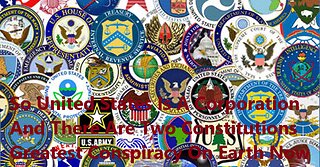 5:19
5:19
What If Everything You Were Taught Was A Lie?
24 days agoUnited States Is A Corporation And There Are Two Constitutions Greatest Conspiracy On Earth
4.07K7 -
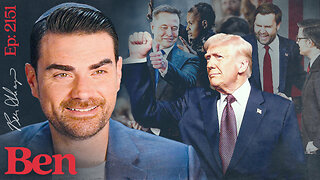 1:04:31
1:04:31
Ben Shapiro
3 hours agoEp. 2151 - Trump’s HOME RUN State of the Union!
32.6K29 -
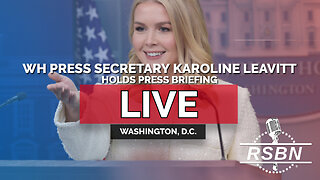 2:06:31
2:06:31
Right Side Broadcasting Network
3 hours agoLIVE REPLAY: White House Press Secretary Karoline Leavitt Holds Press Briefing - 3/5/25
66.5K58 -
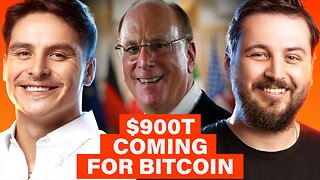 1:16:50
1:16:50
Simply Bitcoin
4 hours ago $3.64 earnedBLACKROCK'S GAME CHANGING BITCOIN REPORT Creates $900T of FOMO? | EP 1195
17.3K2 -
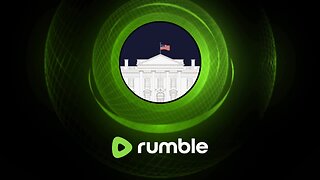 1:00:23
1:00:23
The White House
3 hours agoPress Secretary Karoline Leavitt Briefs Members of the Media, Mar. 5, 2025
25.9K17 -
 23:34
23:34
marcushouse
14 hours ago $0.98 earnedWhat Really Happened to Starship? The Full Story! 🚀
8.47K4 -
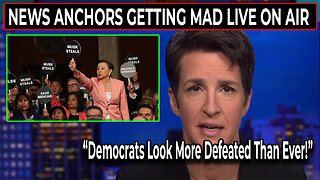 16:55
16:55
T-SPLY
8 hours agoMSNBC Used A Child Brain Cancer Survivor To Make Donald Trump Look Bad
10.3K25 -
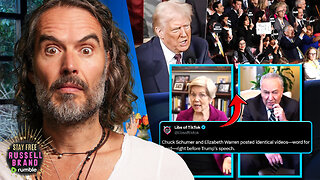 1:03:31
1:03:31
Russell Brand
4 hours agoScripted Opposition? Democrats’ Viral Attack Video Drops as Trump Dominates Congress – SF548
98.6K68 -
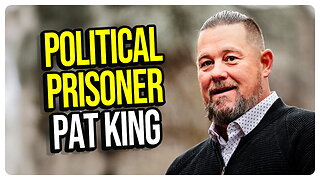 DVR
DVR
vivafrei
1 day agoEXCLUSIVE Interview with Pat King, Canada's Political Prisoner
53.1K17 -
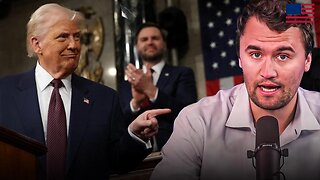 1:58:36
1:58:36
The Charlie Kirk Show
3 hours agoTrump Speech Aftermath + Pardon Derek? | Kane, Sen. Banks, Collin | 3.5.25
92.5K32